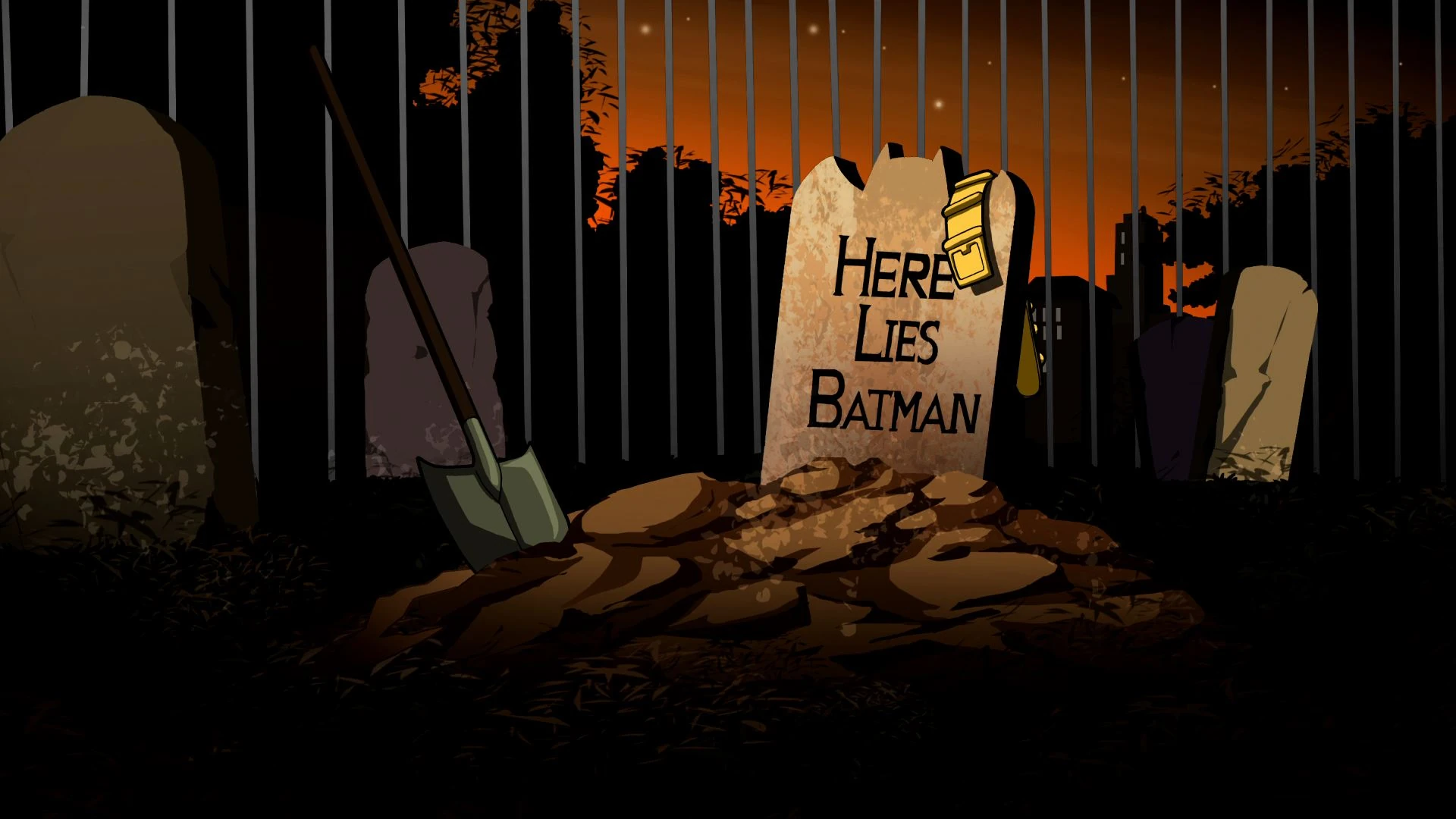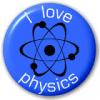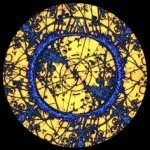Blogs
Our community blogs
-

- 5
entries - 1
comment - 2956
views
Recent Entries
Latest Entry
Action and Reaction pt.2
Last time I talked about Netwon's 3rd Law, and how it is similar to offense in basektball. I said that "Newton believed that every action had an equal and opposite reaction, meaning that all forces come in pairs. If object 1 exerts a force on object 2, then object 2 must exert a force back on object 1 which is equal in magnitude and opposite in direction." To be good at defense in Basketball, it would be great to follow a similar concept. On defense your goal when matched up to a player on 1 on 1 defense your goal is to shut down 1 player and make sure they can not make an impact on the game. You want your defensive assignment to score as little as possible or better, not at all. Follow your player like a shadow. whatever he does, you follow that, so if he drives to the basket left, backpedal, and try to stay in front of him. direct him with your defense. If your playing a little bit off of him, stand between him and the ball, this is called being in hte gap, if you play it correctly, you should always be aware of the ball and the man. You are vulnerable to a back cut, if you dont watch your man carefully. If you correctly know where the ball and your man is, you are always in a good position to steal the ball off a pass. The 3rd Law idea also helps hear, as you have to shadow the offensive player your gaurding, mirror his movemnts so you can always stay in the gap, and you can always be in the position to steal the ball. Your goal should be to never let your assignment even touch the ball. No scorer can score without the ball, and that is something to remeber. >>>>>>>>>>>>>>>>>>>>>
<<<<<<<<<<<<<<<<<<<<< In this clip, Kobe cuts, and recieves the ball for an easy two points, the defender didn't have a good enough position to either stop Kobe, or steal the ball, and this is exactly what you do not want to happen as a defensive player.
- Read more...
-
- 0 comments
- 5
-

- 15
entries - 7
comments - 2934
views
Recent Entries
Latest Entry
making a wave
Today in our lab we had a cylinder of water and some tuning forks and my group figured out a cool thing. When we struck the tuning forks and placed them in the water, the water splashed and made some waves. The tuning forks with lower frequencies didn't make those waves because they didn't have enough amplitude to move the water. The thicker and longer the tuning fork was the bigger the waves. The water splashed onto the cylinder of water and was quite amusing to me and my other group members. The sound waves from the tuning fork made a vibration and amused us by the splashing water. Although the lab was fun, that part was even more fun.
Another thing that happened today that created waves was when I hit the rubber stopper against the plastic tube. The sound varied with the material I used to hit the tube. When I hit it with the rubber stopper, the noise was quieter compared to when I hit it with the wooden part of the pencil. The different frequencies changed the sound that we heard when I hit the tube.
- 15
-

- 13
entries - 2
comments - 2922
views
Recent Entries
- 13
-
 Latest Entry
Latest Entry
WHY BATMAN SHOULD BE DEAD!!!!(MUST SEE)

Batman should be dead. Rate 5 stars and I'll tell you why.
I'm waiting....
Okay cool thanks. Just kidding. It's because of his cape!

Do you really think batman would be able to survive a leap off of a skyscraper? Let's find out. A group of students from the University of Leicester did an actual experiment using mathematical simulations. They give a wingspan estimate of 15 feet. An average skyscraper is 492 feet high. When an electrical charge is sent through batman's cape in Batman Begins, it turns into a rigid glider. It was calculated that he would travel a total distance of 1,148 feet. That's cool and all, but how would he land? What speed would he reach? The students calculated that he'd reach a top speed of 68 mph, and land at 50 mph. If you think he'll be okay, the students reason that you should "consider impact with a car traveling at these speeds." New movie idea: Batman is the new Flat Stanley.
-

- 21
entries - 14
comments - 2917
views
Recent Entries
- 21
-

 Latest Entry
Latest Entry
The Physics of Throwing Darts
Dart throwing uses physics to get the dart to the bullseye and get the highest score possible or if you are playing different dart related games to get the numbers that you need. Throwing darts uses different parts of physics to have the dart hit the target in the area that you want it to. Projectiles and energy to have the dart move through the air and to the target.
http://t0.gstatic.com/images?q=tbn:ANd9GcRkg2zI4qLuZQhKx--Y_UdKk5MaKRGFgmx59CgycvZwAWUIGoRImw
The darts are a projectile because they are thrown at an angle and you need to find the best angle with the correct initial velocity to get the dart to the board. The angle at which the dart leaves your hand is usually less than 45 degrees so that the dart goes toward the board and not at the ceiling. Even though the optimal angle for most anything else is 45 you need to change the angle and the initial velocity to get the bullseye. the gravity brings down the dart and this is why you need to aim 'higher' than the bullseye.
http://t0.gstatic.com/images?q=tbn:ANd9GcTb9a-28ZH2rwYKXkuDsWXqvIHDSGSg2riJ3jAWzUw8DlJL8IZmxQ
Also you use work because you move your arm which is the displacement and you force the dart to move forward toward the board. Darts use work to make their way to the target because they have to move and the force exerted by the person is on the dart. The darts use the work to make it to their destination. This shows that darts uses physics, by using different equations you can find out everything you need to know.
-

- 13
entries - 13
comments - 2889
views
Recent Entries
Latest Entry
Differential Equations Have Some Swag After All
So I'm actually in my honors chemistry class right now, but who cares right? It's not like it's physics... anyways, good to be back!
Yesterday, in my differential equations class, we started section 2.3-- I don't actually remember the title-- at the ungodly early hour of 9 AM. aka, really not that early. Now, if I/ other AP C past/current students remember correctly, early in the year we discussed air resistance on a falling object. According to Newton's 2nd Law, net force or ma equals whatever you determine to be the net force. In this case, using a force diagram, you have the force of mg down minus the effect of air resistance (I'll use kv in this case because we used it in my math class, though last year we used bv and cv^2 I believe). Thus you have ma=mg-kv, and since a=dv/dt, you have m(dv/dt)=mg-kv . This is (wait for it) a differential equation! Yay!
Specifically, it is a linear differential equation, more commonly seen in the form dv/dt+ (something)*v=something. So when Mr. F just skipped over the steps/integration/nothing made sense, that's why. It was a DE.
Note: I don't fully remember how we did the problem, but I think we were just told what the equation came out to, and skipped the actual steps.
Anyways, you put it into the form dv/dt+(k/m)*v=g (the dv/dt can't have a coefficient), and then you do a bunch of really really really cool steps to solve it. You take the stuff in front of the v (in this case, k/m) and set up this: e^(integral of k/m dt). Clearly, this gives you e^(kt/m). You then multiply everything in the equation by this, giving you (e^kt/m)*(dv/dt+ (k/m)*v) = g*(e^(kt/m)). The left side of the equation turns into d/dt of e^(kt/m) times v. We don't actually do anything to get to this, it's just known that that's what it turns into, and you can check it to make sure.
You know have d/dt of e^(kt/m)*v = g*e^(kt/m). you integrate both sides with respect to t, leaving you with:
e^(kt/m)*v=e^(kt/m)*gm/k + Constant ©. Then just isolate velocity.
That gives you v(t) equals gm/k+ C*e^(-kt/m), and you can solve for C pretty easily (either with v(0)=v(subscript)0 or v(0)=0. And that's your air resistance equation! (hopefully)
I'm assuming I messed up a negative sign somewhere, or it should be -gm/k, or something else, but that's the general shape of a) a Linear DE and
 this force equation. Hopefully it's mostly right, and not overly boring because it's actually kinda cool. So yeah... go physics!
this force equation. Hopefully it's mostly right, and not overly boring because it's actually kinda cool. So yeah... go physics!Probably the longest blog post I've done, but I deemed in necessary. Sincerely, your resident Swagmeister
#APC Rules
- Read more...
-
- 0 comments
- 13
-

- 10
entries - 8
comments - 2874
views
Recent Entries
Latest Entry
Light's Out
Friday April 10th might as well have been Friday the 13th!!! Due to the very strong wind, the traffic lights on Cooper and Titus were knocked out. Unfortunately, several businesses around that area also felt the wrath of Mother Nature, suffering from power outages themselves. I work at Cam's Pizzeria as I have mentioned in my previous blog posts, and my place of work suffered from the power outage but heres the catch... only in half of our store. What does this have to do with physics you say? Well the part of our store that of course had the oven on it did not receive power. The fryers worked and of course the sub bench but nothing involving pizza. A few lights worked and a few switches didn't. Why is that?? I think it has to do with the electrical circuits. The lights that were still on probably operated by parallel circuits so they had more than one path to travel as a back up. The ones that were out immediately, like the oven, were probably powered by series circuits, and only had one path to go through, shutting the light source off completely. Eventually, (8 hours later), the power was back on. After dealing with rude customers who were not understand and turning away about 5 French foreign exchange students, everything was back to normal and we could serve pizza again. (:
- 10
-
 Latest Entry
Latest Entry
Lego
I'm a big fan of Lego. I wouldn't quite call myself an enthusiast, but I do enjoy a good build every once in a while. I remember when I was little I would always try to build these massive structures and would wonder why they would fall apart. Now I see that It's because of my awful engineering. I would create an immaculate creation with weak pivot points, allowing its natural torque to attack all of the little points I left unguarded, until eventually it would crumble. Or worse yet snap, sending Lego pieces everywhere. The Lego pieces will have fought so hard to remain in place, and once the connection is severed, all of that built up energy goes directly into sending little bricks flying all over the place for you to find months later when you're cleaning behind the couch even though you know for a fact that the Legos never actually left you room and how did they even end up down here... Anyway, here's a Lego particle accelerator...
- Read more...
-
- 0 comments
-

- 33
entries - 8
comments - 2851
views
Recent Entries
Latest Entry
Sunflower Seeds
As I'm sure many of you know eating sunflower seeds is a very popular task and one that is full of physics. Such as when you are biting down on the seed to crack it you are putting a force down onto the seed that is needed to crack but did you know that the seed is putting a force onto you. Indeed the seed is putting a force onto you called the normal force. This helps allow you split the shell. Now when you spit out the sunflower seed you are doing a kinetic equation that will affect the distance that you are able to spit the seed. Such as if you want to spit the seed farther you have to give it an initial velocity. Then this in turn will give it a larger displacement and will result in a final velocity of zero because the seed will have landed on the ground. This is the physics involved in spitting out sunflower seeds.
- Read more...
-
- 0 comments
- 33
-

- 8
entries - 8
comments - 2849
views
Recent Entries
 Latest Entry
Latest Entry
Negative Kelvin?!
When we think of Kelvin temperature, we think only in positives, since zero Kelvin is also absolute zero, the point at which a particle has absolutely no energy, and thus no movement or vibration. Scientists in Germany, however, managed to create the hottest temperatures ever recorded by creating a substance with a negative Kelvin temperature.
How is this possible? Well, in order to understand this bizarre concept, we have to go back to our definition of temperature. In thermodynamics, we typically refer to temperature as the average temperature of the particles in a substance. However, because quantum physics deals with energies as the smallest of small scales, and because quantum physics is, from a mathematical perspective, about probabilities, it makes more sense to define temperature as the distribution of the energies of the particles in a substance. So, for example, a boiling pot of water would obviously have plenty of high energy particles buzzing around, but it would have a few low-energy particles too. We simply would pay them no mind because the average energy of the particles is consistent. To a quantum physicist, however, those few low-energy particles matter, because they form part of the energy distribution of the substance.
By definition, when a substance has a positive Kelvin temperature, the particles start from a minimum temperature (absolute zero) and spread out toward higher energies. The German scientists, however, wanted to create a substance that started at a maximum temperature and spread toward lower energies. By definition, such a substance would have a negative temperature.
Paradoxically, having a negative temperature makes the gas that the scientists created extremely hot. Since the particles start from a maximum temperature and spread to lower temperatures, and since energy flows from hot to cold, heat will always flow away from the negative temperature gas, making it the hottest thing we've ever observed.
One of the other interesting properties of negative temperature gases is that they not only have the hottest temperatures, but negative pressures. Normally, a gas concealed in a container would spread out and apply pressure to all sides of the container. A negative temperature gas, on the other hand, causes the atoms in the container to cave inward, as if everything converges to a single point. Because dark matter is believed to have negative pressure as well, this characteristic of negative temperature gases leads scientists to think that studying them may reveal more to us about the elusive dark matter that is believed to account for a lot of "missing mass" in the universe.
You can read more about the negative temperature gas and the study conducted by the German scientists here:
- 8
-

- 6
entries - 4
comments - 2840
views
Recent Entries
Latest Entry
How I Broke My Pinky
Everyone knows the blue, padded gym walls. If someone was to offer you 10 dollars to punch one as hard as you could, there are at least 5 of you out there who would take it. Well, had i known the physics of a punch, I wouldn't have ended up with a broken pinky. If you're going to punch a blue wall in the gym, keep this in mind. The longer the punch connects with the wall, the smaller the force was. This makes sense logically,, if i hit something hard my hand will bounce back from the collision. If I just Touch it, the collision is a lot less forceful and far less damaging.
Airbags rely on this fact as well. Newton's first law accounts for inertia, and in a car accident, inertia might throw you through a windshield. Airbags deploy and you fall into them, keeping contact for much longer than you would have if you smashed into the steering wheel. This weakens the blow, and therefore the damage that the force will have
- 6
-

- 3
entries - 3
comments - 2796
views
Recent Entries
Latest Entry
physics of explosions
Few people are surprised by the fact that an asteroid, the size of Mt. Everest, could do a lot of damage when it hits the Earth. And it is not really surprising that such bodies are out there; every few years, there is a newspaper headline about a "near miss" in which an object misses the Earth by "only a few million miles." But why should an asteroid impact cause an explosion? It was made of rock, not dynamite. And why such a big explosion? But then, what is an explosion, after all?
An explosion occurs when a great deal of energy is "released" into a small volume in a very short period of time. It doesn't matter what the source of the energy is; it could be chemical (stored in food), or kinetic (the result of motion).
However, nuclear bombs are the most devastating of them all and can cause some serious damage in its surroundings The dominant effects of a nuclear weapon (the blast and thermal radiation) are the same physical damage mechanisms as conventional explosives, but the energy produced by a nuclear explosive is millions of times more per gram and the temperatures reached are in the tens of mega kelvins. Nuclear weapons are quite different from regular weapons because of the huge amount of explosive energy they can put out and the different kinds of effects they make, like high temperatures and nuclear radiation.
The devastating impact of the explosion does not stop after the initial blast, as with regular explosives. A cloud of nuclear radiation travels from the epicenter of the explosion, causing an impact to lifeforms even after the heat waves have ceased. The radiation can cause genetic mutation, radiation poisoning, and death. because of this harmful effects, during the cold war people were traumatized to live in a time period where atom bombs seemed to make the power of the country greater and unfortunately it wasnt a success
- 3
-

- 9
entries - 17
comments - 2765
views
Recent Entries
 Latest Entry
Latest Entry
Physics in Going Super Saiyan
In Dragon Ball Z, whenever a character transforms into a powered up state, their hair becomes golden and they're referred to as "Super Saiyans". There a few different forms of Super Saiyan, but in the clip, I've linked, Gohan goes SS2. When a character transforms, they begin to produce a powerful aura that destroys and lifts the ground around it, causing debris to fly up and float around the character, and for the earth to shatter underneath them. This means that the aura itself is so powerful that the force of it alone is enough to break the ground and launch it through the air. That is absolutely insane, I can't even pick up the ground with my arms.
- Read more...
-
- 0 comments
- 9
-

- 14
entries - 3
comments - 2747
views
Recent Entries
Latest Entry
waves and sound
- Read more...
-
- 0 comments
- 14
-

- 13
entries - 4
comments - 2737
views
Recent Entries
 Latest Entry
Latest Entry
sound waves
Sound is produced when something vibrates.. The vibration causes the medium around it to vibrate. Vibrations in the air are called longitudinal waves, which can be heard by humans. Sound waves consist of areas of high and low pressure called compressions and rarefactions. The wavelength and the speed of the wave is determined by the pitch or frequency of the sound. Wavelength, frequency, and speed can be determined if you know the other two. The equation speed equals frequency times wavelength is the equation used to do this. Since sound travels at 331 m/s at standard temperature and pressure. Also, longer the wavelength, the lower the pitch. The height of the wave is known as the amplitude. The amplitude determines how loud a sound will be - as amplitude increases loudness increases.
- Read more...
-
- 0 comments
- 13
-

- 5
entries - 3
comments - 2704
views
Recent Entries
Latest Entry
Goodbye/Hello Physics
I've been reading some of the seniors final blog posts in physics and I decided to be moved by the same wave. I didn't face any new challenges. I struggled to be consistent because I'm not the best at time or mental management. I lose track of relatively large amounts of time easily. Through the ups and downs I learned well from the master Fullerton. I too now am one master yet I feel slighted. ALL of the physics in star wars is fake... not fake but impossible in my lifetime so I learned what I already expected to be true in such depth I'm happily confused now rather than how I was mischievously curious about Physics and all that it entailed. I'm glad I spent the time in class to learn from kinematics to modern physics. Being in class turned out to be entertaining and mentally fulfilling. i've come to the conclusion that Physics isn't studied for the sake of knowing and understanding it because it seems to me, there is no end. One cannot simply understand physics further than what we understand now. I honestly believe Physics is studied to enhance ones ability to think. I think Physics is the gateway to transform thinking from being a scalar quantity to being a vector, strong, focused and intentional to derive something specific in another facet possibly. Taking Physics has allowed me to grow in a way immeasurable by me at the moment and I respect Physics. I enjoyed the class and that's all that matters besides me gaining the minute understanding I have gained. To say the least, if I could bend time I probably couldn't make myself do anything differently but if I COULD I would enjoy it more. I'll encourage my underlings to take the course too!
Farewell Physicists!
- Read more...
-
- 0 comments
- 5
-
 Latest Entry
Latest Entry
Biking
Mountain Biking has an endless list of things that are physics, from the static friction of rolling tire to kinetic friction of a tire skidding to the force applied by your feet on the pedals or the force applied by your fingers on the brake levers. I bike a lot in summer and even sometimes in the winter, but the best story I have of biking pertaining to physics took place on a rainy summer day. My friend and I were biking and we got to a board walk and both had the same idea, that wet board walk is going to be really slippery lets go screw around on it. Well I dart over to the board walk and rather cautiously proceeded on it, then I had the great idea to kick out the back tire on the slippery surface little did I know the Kinetic co-efficient was much lower than the static co-efficient on this surface, and when I kick out the back tire it came around so fast I was on the ground with my friend laughing at me before I knew what had happened. My friend also clearly having no idea whatsoever of the physics in play, calls me another word for an idiot and rides onto the board walk and kicks out the back and ends up laying on his back on the ground just as fast as I did and never has being insulted been more satisfying.
Biking also has tons to do with air resistance and gravity for example the fastest speed I can hit normally on some of the biggest hills around my neighborhood is about 32mph this is the speed where the force of gravity can no longer overcome the drag that is created by myself and my bike and when this happens equilibrium is reached and I continue at a near-constant speed until the hill subsides.
-

- 14
entries - 2
comments - 2667
views
Recent Entries
Latest Entry
Metal Cereal?
Not many people put a whole lot of thought into what their morning cereal is made of. Most people would just assume there's some grain and maybe a little sugar, or a lot of sugar if you're more of a Lucky Charms person than a Raisin Bran person. Nobody would suspect, though, that there would be metal in their Cheerios. Turns out, Cheerios are magnetic. Or are they?
Fill a bowl with water and drop in a couple Cheerios. Take a magnet and hold it just above the Cheerios, the Cheerio will be attracted toward the direction of the magnet. Why is this? If the little cereal ring is magnetic, then there must be metal fragments in it causing the attraction. Now the cereal is all magnetic, and it does contain tiny fragment of iron. This is perfectly reasonable though, as iron is a key nutrient in a human diet. But that's not the whole story,
If you were to try this with objects other than cereal, say a small piece of paper or plastic, it would still seem to be attracted to the magnet as it floated in the water. The "attraction" you see is actually all about water, which is diamagnetic, meaning it generates a magnetic field opposite to that of the magnetic field it is in the presence of. Thus, the water is slightly repelled by the magnet. This causes a slight divot in the water, that the object in the bowl actually falls into, making it appear to follow the magnet. In actuality, it isn't being affected directly by the magnetic field, but by the waters reaction to the magnetic field.
- Read more...
-
- 0 comments
- 14
-

 Latest Entry
Latest Entry
TI Selfie
- Read more...
-
- 0 comments
-

- 11
entries - 3
comments - 2640
views
Recent Entries
Latest Entry
How to carry groceries
Every time I get groceries with my mom I try to bring all of them in the house at once. She typically says, "You should take more trips!" But physics is on my side. It requires more work to bring in several loads of groceries opposed to just one big load. If work is a force x a distance than one big trip will require the least amount of work. To make one big load requires me to move the huge load of groceries, and myself once from the car into my house and into the kitchen. Simply taking two trips would require me to move myself from the car twice and back out to the car once. Splitting the groceries into two loads requires the exact same amount of work to move the groceries once because the force is halved but the distance is doubled. The issue of splitting the groceries into two or more loads is the work required to move myself is added. If assumed the distance is 20 meters from my house to the car and the groceries weigh about 100 kilograms then the force of the groceries is 1000N. The work required to move the groceries 20 meters is about 20,000 J. I weigh about 80 kilograms then the force of gravity is about 800N so it takes about 16000J to move myself. One trip of groceries would be 20,000 J + 16,000 J = 36,000J. Two trips would be 10,000 J(half the groceries) + 16,000 J + 16,000 J + 10,000 J +16,000J = 68,000 J. This is because I must move myself with the groceries 20 meters, then myself back to the car, then myself back inside with groceries again. By doing all of the work in one load I save 32,000 J of energy. Regardless of the load of groceries one big trip would save 32,000 J of work. It may be too difficult to carry all of the groceries at once but a load weighing perhaps weighing 20 kilograms is definitely manageable and effective in conserving energy if all done at once.
- Read more...
-
- 0 comments
- 11
-

- 15
entries - 10
comments - 2619
views
Recent Entries
 Latest Entry
Latest Entry
Doppler Effect
 On the show The Big Bang Theory, Sheldon goes to a Halloween party and dresses as the Doppler effect. he explains his costume to people by giving them the definition "its the apparent change in the frequency of a wave caused by the relative motion between the source of the wave and the observer". throughout the episode he also makes the noise of a car going by when people try to guess what his costume is. This noise he makes is a clear example of the Doppler effect because it sounds louder in the beginning and then fades away. This occurs when a siren of a police car or fire truck passes due to the Doppler effect.
On the show The Big Bang Theory, Sheldon goes to a Halloween party and dresses as the Doppler effect. he explains his costume to people by giving them the definition "its the apparent change in the frequency of a wave caused by the relative motion between the source of the wave and the observer". throughout the episode he also makes the noise of a car going by when people try to guess what his costume is. This noise he makes is a clear example of the Doppler effect because it sounds louder in the beginning and then fades away. This occurs when a siren of a police car or fire truck passes due to the Doppler effect.
- Read more...
-
- 0 comments
- 15
-

- 5
entries - 10
comments - 2612
views
Recent Entries
 Latest Entry
Latest Entry
the physics of a car
A car is the main thing people use to get around. But people usually just get in and go, and then hit the brake either at a stop sign or a stop light. Then they hit the gas when that person is able to go. But driving a car has a lot more than just hitting the gas and brake. There is a lot of factors that have to deal with physics involved.
First, there is many forces acting on a car when it is at rest and when it is moving. Some of those forces are the normal force, which is the car itself. Also, there is a force of friction when the tires are in contact with the ground. Then the force of the ground acting back on the car. Next, once you hit the gas and get going you start to have a velocity. The Faster that you go the more your velocity will pick up, and once you start going the same speed you velocity will start to level out to a constant speed. Lastly, there is momentum when driving. When you have a bigger momentum, it will take longer for you to stop and likewise for a smaller momentum. To find these things you can do your own time trails. and then your reference table and plug in the numbers to solve it.
- 5
-
 Latest Entry
Latest Entry
Archery
we are starting the archery unit in gym and I was wondering what the physics we behind it. I did some research and I found some pretty cool stuff about it, I found that when aiming archers generally aim to one side of their target and the arrow straightens out during flight. the arrow is able to straighten out because the fishtail at the end of the arrow oscillates causing the arrow to move back towards the center.
- Read more...
-
- 0 comments
-

- 8
entries - 7
comments - 2573
views
Recent Entries
 Latest Entry
Latest Entry
Video games are kinda physicsy
Computers are good at math, right? So it follows that video games should be able to do plenty of physics calculations while you run around shooting zombies and stuff, right? Well, the thing is, they have to do a lot of calculations - and they have to do them really, really fast. Take, for example, some game based on a large map, with somewhere around a hundred players, all trying to shoot each other to death. Handled naively, every time a player shoots, the game would have to continuously test if the bullet is intersecting any player on the whole map at any given point along its path. And even handling one single player isn't easy! It's gotta check if it hit the player's foot, leg, other leg, hip, abdomen, shoulder, arm, other shoulder, other arm, neck, head... And then it gets even more confusing when you suddenly have an impenetrable pan on your back blocking some bullets. Now, check for all of these intersections somewhere between twenty and a hundred and twenty times per second, for every single bullet, for every single player. Basically, it's kinda hard for even fast computers to keep up, while remaining accurate.
But that's where humans and their fandangled logic comes in! Now, how could a bullet possibly hit someone, if it's practically in a different time zone from them? Short answer: it can't! (Unless you have teleporting bullets, in which case you should be selling the technology for billions, not shooting people with it). So, take this giant map, and split it up into anywhere from a few to a bunch (so specific, I know) of little bitty squares. Now, as players move around, you've gotta keep track of which square they're in, which takes a bit more work. But now, when you have a bullet (or a few thousand) flying through the air, there's no way it's going to hit someone that's not within either its own zone, or maybe one of the adjacent zones. Now you've gone from checking every player in the game, to between zero and a handful! Much easier!
These same sorts of logical assumptions can be made for all sorts of locality-based applications, like virtual lighting (really, do you want to simulate a billion photons shooting around a room?), more advanced collision detection (we've done point-like bullets hitting round-ish parts of bodies, but what about really complex, non-convex things hitting each other?), as well as odd things like splitting up a group of points into non-spiky triangles (or tetrahedra). That actually has applications in fluid dynamics, modelling the density of stars in galaxies, and a bunch of other things way over my head.
- 8
-
Recently Browsing 0 members
- No registered users viewing this page.





